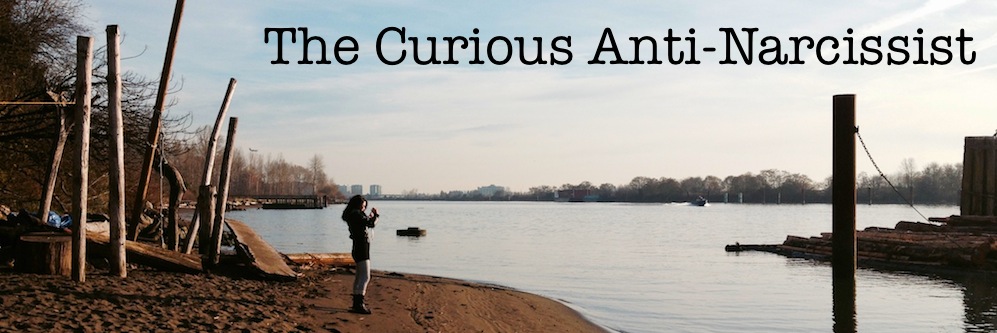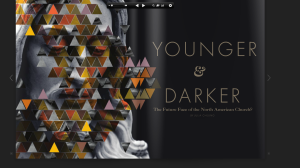[originally published in the print edition of Converge Magazine, Jan/Feb 2014 issue]
The Future Face of the North American Church
“If a church in America isn’t growing younger or darker, then it’s not growing,” John Chandler Cleveland says to me, over the din of clinking wine glasses and restaurant chatter.
Cleveland and his wife China are en route between preaching engagements in B.C. and their home in Southern California. I’m their ride to the airport and we are catching a pre-flight bite.
Cleveland looks about the same age as President Obama and even resembles him a bit, in build and in facial structure. They’ve been in town preaching and attending a conference where their oldest daughter, Christena Cleveland, was the keynote speaker.
After dropping them off, my brain latches onto Cleveland’s church growth idea with octopus-like tenacity: I am both young (or so I like to think) and dark.
But is it really true? Does church growth in North America necessitate a younger and darker pew demographic?
DJ Chuang, a church strategy consultant and leading expert on Asian-American churches, thinks so.
“In the US, it’s projected that by 2043 there will be no majority racial/ethnic group, so a multicultural society is definitely in the near future,” Chuang says.
~~~
Last summer, Rachel Held Evans published an article titled “Why Millennials are Leaving the Church” on the CNN Belief Blog. The piece went viral and sparked intense debate that rattled both Christendom and Internetdom.
The controversy doesn’t dwell on whether or not millennials are leaving the church (statistics show they are doing so in droves). Rather, debate revolves around how to keep and attract the younger generations.
But when Bryan Calvin looks at numbers, he finds the black church in America is not showing the same kind of decline. Calvin is an African-American political scientist from Texas. In comparing surveys from 2007 and 2012, he finds church attendance for millennials in historically black protestant churches has been stable, even though church attendance for the millennial age group as a whole has dropped.
Calvin wonders if black millennials feel safe in their church communities where they can rest from cultural onslaughts and feel at home. In black churches, they don’t have to “code-switch” (change their linguistic jargon) to fit in within larger mainstream white culture.
Christena Cleveland, Chandler and China Cleveland’s oldest daughter, is a social psychologist who specializes in racial reconciliation. Her book Disunity in Christ: Uncovering the Hidden Forces that Keep Us Apart came out in November 2013.
“Code-switching has such negative connotations,” says Cleveland. “It almost feels like you’re being duplicitous.”
But she says she does sometimes feel like she has to guard herself more in predominantly white contexts. “Code-switching can be like a survival mechanism,” she says. “It’s tiring. It’s tiring to put on a mask.”
Cleveland says even when she’s surrounded by the most progressive and enlightened white groups, she feels as though she needs to communicate in a certain way.
“If you show real pain or anger, you are suddenly an angry black woman and they shut you down. They want reconciliation but only the nice hopeful parts,” says Cleveland. “So it’s different from speaking to a multi-ethnic group or a group of color. That’s when I don’t feel like I have to code-switch. I have a lot in common with a lot of ethnic groups — we all know what it’s like to be other.”
Code-switching is something 25-year-old Aaron Robinson is very familiar with, though not linguistically. Robinson is a master at the cultural code-switch. He is one-quarter First Nations, but he looks as white as they come.
Robinson spent the first decade of his life in Prince George, B.C., amongst First Nations Peoples and Anglo-Canadians. When he moved to Vancouver, B.C. at age ten, he found himself one of only five white faces in a dominantly Asian and South-Asian environment.
Social and racial segregation abounded. “I was one of the few to have friends in every ethnic group,” Robinson says. “I hung out mainly with the whites but I think I had this grace that enabled me to be friends with everyone.”
But even though he felt different, it was in a good way. “All the teachers knew [the white kids’] names. We somehow stood apart from everyone else.”
This contrasts sharply with the social isolation I felt as a child in Calgary, A.B. I’m a Chinese-Canadian who entered Kindergarten knowing only scraps of English. My mother tongue cut me off from society at large.
So while Robinson and I both grew up as outsiders, his different was a good different. And mine was, well — good in that it shaped my character? The teachers always knew my name too. Although they also butchered the Chinese pronunciation (it’s “Chui”, like ‘chew’). I was usually one of three Asian kids in a class of 30. My foreign-sounding name never failed to garner playground insults that plagued me around the schoolgrounds like thirsty mosquitos.
Cleveland’s exposure to teasing and alienation surprisingly occurred in another context: within the church. A blog post that she wrote last summer, “Everything I Learned About Racism I Learned in the Church” sparked just as much Internet polemic as you might imagine something with that kind of title would.
Cleveland grew up in a generally ethnically diverse context. “The only time I really experienced [white] homogeneity was at church functions when I went to Awana, to Missionettes, and Sunday school in predominantly white churches before the third grade,” she says.
“In Missionettes I was one of maybe two black girls and I remember feeling explicitly otherized there where I would make comments about food that I ate or customs in my family and people would be like, ‘That’s weird or gross.’ During slumber parties, the girls thought it was really weird that I wore a cap on my head,” says Cleveland.
Robinson, Cleveland, and I all survived the perils of feeling different through childhood; but we all emerged, shockingly, both adult and Christian. This, as Rachel Held Evans reminds us, is a small victory.
And it’s a victory that Duane Litfin feels passionately about. Litfin was the president of Wheaton College from 1993-2010, and spent almost two decades observing the evolution of millennial Christianity.
When I ask him whether a church needs to become “younger and darker” in order to grow, he says, “Given the changing demographics of [North] America, there will be little [church] growth if it’s happening only among the shrinking white population.”
Cleveland answers the same question with academic rigor: “I haven’t found any actual data that says your church isn’t physically growing if it’s not brown. I will say though that all mega churches are multi-ethnic. There’s a lot of evidence showing that the world-wide church is brown. And the church of the global south — Christians from Latin America, Africa, Asia — [are] moving to North America. As of now, the fastest growing demographic group is the Hispanic church.”
Cleveland’s new book is a timely addition to any Christian discussion on church growth. But true diversity requires a lot of work. And people who want to read her book need at least access to leisure in order to find time to read.
“What if you are like a low-income mom to junior high girls in Santa Barbara, where I used to volunteer, and you are working four jobs?” Cleveland says. “Just getting to church is a miracle, much less taking the time to pick up a book and read it or take time to invest in cross-cultural relationships that are probably going to be painful for you.”
So she affirms that the racially homogenous church sometimes has a very special “shelter” kind of role for marginalized people, even though all the research suggests that ethnic homogeneity is mostly bad.
Sunny Bhangle has experienced the pitfalls of ethnic sameness first-hand. She’s a Punjabi-Canadian who converted from Sikhism to Christianity when she was 20. For four years, she attended a Hispanic church.
“I loved that church,” Bhangle says, “Everyone was so close and caring. They really nurtured me as a new Christian. But in the end I had to leave, even though it broke my heart. I felt that the sameness started to stifle my Christian growth”.
Why is sameness, or homogeneity, stifling? Cleveland says that when we don’t interact with people who are different, we tend to not empathize with them, understand them or address our inaccurate perceptions of them.
“For unity in the body of Christ, I would definitely say homogeneity is bad,” Cleveland concludes. “That said, the body of Christ is broken. At this point, the broader American church just isn’t very good at loving well across cultural differences and making people of color feel like they matter.”
This reaffirms Bryan Calvin’s suspicion that homogenous, ethnically-specific churches serve as safe havens for people of colour. The end goal, however, should still be a better-integrated, ethnically diverse Church.
~~~
Diversity is a concept fraught with tension. Chandler Cleveland is a good introduction for novices to the cultural nuances of black preaching, much like Starbucks’ caramel machiatto might be a good intro for coffee novices. He waves his hands when he has the pulpit and rides the enthusiasm of his listeners, steering his talk as an expert orator should.
But some black folks murmur that he’s sold out to the whites. His diction can’t disguise the Ivy League education and a certain familiarity with (white) movers and shakers. He isn’t black enough for the blacks and he isn’t white enough for the whites.
Chandler, China, and Christena Cleveland have had to navigate a delicate balance in these racial minefields their entire lives. And it seems that in the foreseeable future, white Christians may have to navigate these minefields just as carefully.
“Given the rapidly changing demographics in North America, if you are a church that is only attracting white people, you are a dinosaur,” says Christena Cleveland. “The diverse kingdom of God is at hand. We need to look up and see it.”
[originally published in the print edition of Converge Magazine, Jan/Feb 2014 issue]


Dear Julia,
I read your article with interest. Where I grew up in the Caribbean we have some racism, but our churches are mostly mixed. We don’t have churches based on colour. I lived in Canada for some time as an adult, but I never really had to deal with racism. I come from mixed background, so I guess I really never thought much about the issue. I pray that God would solve the problem.